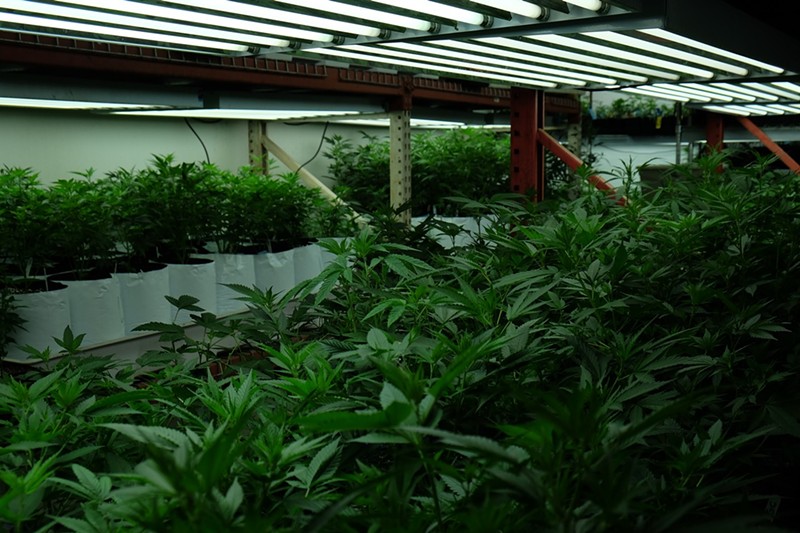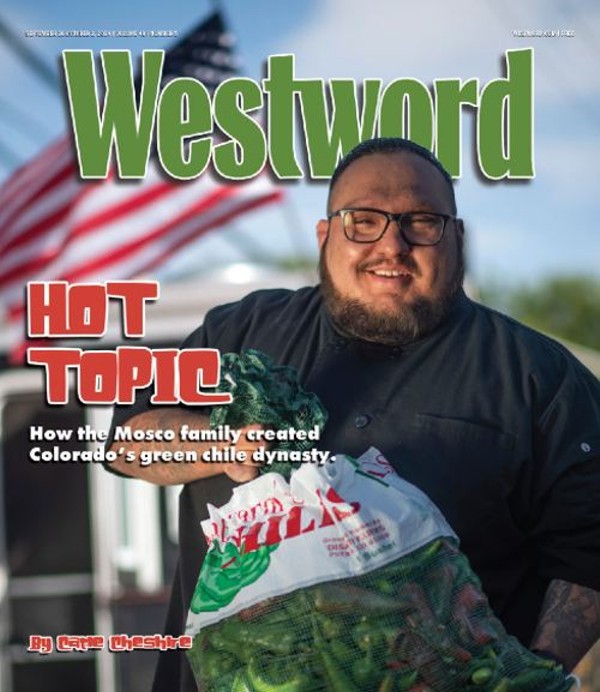The Colorado Marijuana Enforcement Division's estimated price of cannabis flower jumped almost 60 percent from the start to the end of 2019, and these estimates are reflected in rising prices at stores. In Denver, considered by many to be the nation's most mature retail pot market, today you can find eighths of herb with little difference in quality ranging in price from $20 to $60.
To learn more about the roots and future of these shifting weed prices, we spoke with Dan Lauber, co-founder of wholesale cannabis brokerage Source Colorado.
Westword: How accurate do you think these MED rates are?
Dan Lauber: They are somewhat accurate, but delayed — almost a month late, it seems. A lot of changes occurred between when MED estimates were posted in October 2019 and in January 2020. At the tail end of summer, prices were very high with the limited supply we experienced. October is right when the outdoor harvests come down, which has a substantial impact on the availability of wholesale. I think a lot of cannabis assets have been available for purchase now, and especially over the past few months.
I have been capturing data on my team’s wholesale transactions for about five years. There are very high-level patterns we've observed, but overall, these types of market swings are pretty standard and occur a couple times a year. As the industry grows, so does commoditization, which in turn promotes more predictability and stability in the market overall. I would imagine market trends will become more and more predictable as the above-mentioned corporate companies continue to absorb more businesses.
The price increases weren't as high for trim or plant matter allocated for extraction. Have prices for concentrates or edibles fluctuated in a comparable fashion to flower?
That is correct. Last fall, there was a big frost that had a major impact on the outdoor farms, which many were not prepared for. As a result, we saw a direct correlation to an increase in the availability of concentrates, specifically live resin produced from frozen plant material, as that was the best option for these farms to maintain value in their compromised material. As mentioned above, the economics and exchange of product in the branded, extracted product sector is much more dialed, and therefore we have noticed much stronger, direct relationships between growers and extraction companies. Strategic pricing models have been established in arrangements like this to ensure a stable supply chain that benefits both groups. That type of arrangement is much stronger and can withstand market swings — unlike flower, which is essentially grown and sold directly to the retailers, with little pricing strategy in between.
What factors do you think are contributing to the wholesale-flower price increase the most?
With public money now being accepted in the state, a lot of the larger, corporate cannabis companies are purchasing these [retail cannabis] assets to increase their enterprise value, but they don’t have the internal production to meet the demand of these new retail channels. These companies seemed to have been consuming a substantial amount of wholesale, which I believe had a lot to do with the shortage of supply and spike in price over the summer months — not to mention, tourism in the summer is always a big time for the cannabis industry.
I think also something to consider that I have not mentioned is the opportunity for producers in other states. We have observed about a three-year window in emerging legal states where margins are very high. After the third year, margins begin to compress as the market stabilizes, and I've noticed many Colorado producers entering these new markets for more enticing opportunities. The increase in demand for product with a decline in production will undoubtedly have a major impact on the price for wholesale.
How have wholesale and retail prices changed over the past six months throughout the industry?
Retailers have historically had the upper hand, it seems, when it comes to purchasing wholesale. This allows retailers to purchase wholesale low and offer a lower price to the consumer — which is great, but creates an expectation from the consumer that can’t be sustained with these types of market swings. When the price of wholesale increases, the retailers have a much more difficult time trying to raise their prices to the consumer and oftentimes take a pretty big hit. Retail prices have seemed to remain fairly stable, while wholesale tends to be all over the place.
Flower prices have fluctuated quite a bit since legalization began. Are we nearing a plateau or more even ride for cannabis prices any time soon?
With no license cap in Colorado, you are going to experience market saturation. But as the industry matures, businesses are being absorbed and margins are compressing. I think smokable flower will always have subjectivity, unlike processed cannabis products, as long as there are connoisseurs. Much like the beer industry, there is Bud Light and there is craft beer. There are many more Bud Light drinkers than craft-beer drinkers. Bud Light is much more dialed and predictable, and has a low-cost production model. On the other hand, craft beer has many variables and different varieties that the manufacturers try to cater to, which clearly come at a cost. I think we will see more and more stability in the extracted space, but it’s hard to say on the smokable-flower side.

Audio By Carbonatix
[
{
"name": "Air - MediumRectangle - Inline Content - Mobile Display Size",
"component": "12017618",
"insertPoint": "2",
"requiredCountToDisplay": "2",
"watchElement": ".fdn-content-body",
"astAdList": [
{
"adType": "rectangle",
"displayTargets": "mobile"
}
]
},{
"name": "Editor Picks",
"component": "17242653",
"insertPoint": "4",
"requiredCountToDisplay": "1",
"watchElement": ".fdn-content-body",
"astAdList": [
{
"adType": "rectangleLeft",
"displayTargets": "desktop|tablet"
},{
"adType": "rectangleRight",
"displayTargets": "desktop|tablet|mobile"
}
]
},{
"name": "Inline Links",
"component": "18838239",
"insertPoint": "8th",
"startingPoint": 8,
"requiredCountToDisplay": "7",
"maxInsertions": 25
},{
"name": "Air - MediumRectangle - Combo - Inline Content",
"component": "17261320",
"insertPoint": "8th",
"startingPoint": 8,
"requiredCountToDisplay": "7",
"maxInsertions": 25,
"watchElement": ".fdn-content-body",
"astAdList": [
{
"adType": "rectangleLeft",
"displayTargets": "desktop|tablet"
},{
"adType": "rectangleRight",
"displayTargets": "desktop|tablet|mobile"
}
]
},{
"name": "Inline Links",
"component": "18838239",
"insertPoint": "8th",
"startingPoint": 12,
"requiredCountToDisplay": "11",
"maxInsertions": 25
},{
"name": "Air - Leaderboard Tower - Combo - Inline Content",
"component": "17261321",
"insertPoint": "8th",
"startingPoint": 12,
"requiredCountToDisplay": "11",
"maxInsertions": 25,
"watchElement": ".fdn-content-body",
"astAdList": [
{
"adType": "leaderboardInlineContent",
"displayTargets": "desktop|tablet"
},{
"adType": "tower",
"displayTargets": "mobile"
}
]
}
]













